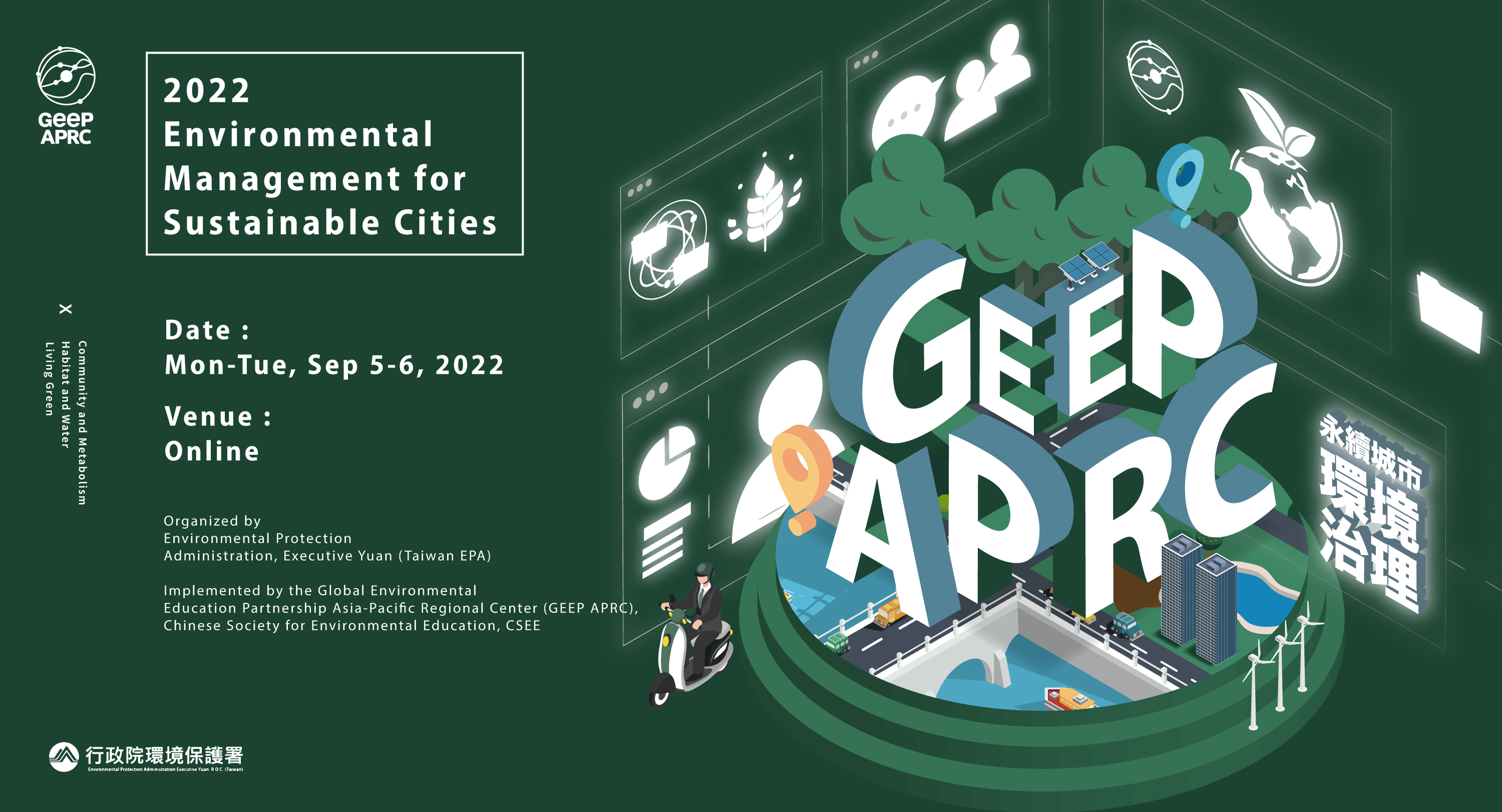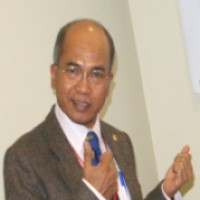
Habitat, Sustainable City, and Environmental Education
Habitat, Sustainable City, and Environmental Education
Introduction
A habitat is a living place, it is like a home, the community. Humans (people), animals, and plants are the living creatures that occupy the planet Earth. Often, they live in the same habitat but people choose the habitat that suits their basic needs—food, water, air, and shelter, to survive. If any one of these basic needs is not met, they may not survive.
The world population is growing. The trend is people continue to move and live in the cities. The United Nations said today about 55% of the world's population lives in cities or urban areas. By the year 2050, the number will rise to 70% and that makes cities denser (Svetlana et. al. 2018; United Nations 2022). The three top reasons why people move and live in the cities are the various opportunities for better employment, education, and lifestyle.
A Habitat and Issues
As many people migrate, it is hoped that the cities can accommodate their needs sustainably along with the opportunities mentioned earlier. Firstly, there should be many employments available for the residents because this is important for them to support their children, families, and the city. Secondly, education is very important in the present day. Children must be educated. The trend is major higher educational institutions are located in or near a big city. These influential institutions offer more majors and draw famous professors which students prefer to study under them. Finally, cities offer ethnically diverse individuals, and the collective cultures create an exciting cultural backdrop. In addition, many move to a big city to experience a melting pot of things such as foods, activities, and entertainment. All of these are not found in their former habitats, rural, but in the cities.
Environmental Education and Practices for Sustainable City
As a city's population gets bigger, the city must capable to accommodate residents with houses or habitats to live, water supply, wastes, energy, transportation, pollution, crimes, and others. Environmental Education (EE), first established by the United Nations (1977) teaches students to respect nature and natural environments, raises citizens about the problems, and emphasizes the importance of EE in protecting society’s quality of life for the future by protecting the environment, eradicating poverty, minimizing inequality, and ensuring sustainable development awareness (UNESCO 1970; Hungerford et. al. 1983; Arba’at 1992).
Cerovsky (1971) defined EE as “a process of recognizing values and clarifying concepts to develop skills and attitudes necessary to understand and appreciate the interrelatedness among man, his culture, and his biophysical surroundings. EE also entails practices in decision-making and self-formulation of behavior about issues concerning environmental quality.” Thus, EE allows individuals to explore issues, engage in solving the problems, and take necessary action/s related to environment (legally, politically, educationally, economically, environmentally).
Hungerford et al. (1980) suggested but compacted the UNESCO (1970) five EE goals into four to be operationalized within the school curricula and societies. This will enable city residents to apply goals to manage their living in the city. The summary of each goal is as below:
Goal 1: Knowledge and Ecological Foundation provides a receiver with sufficient knowledge of ecology to permit him/her to make ecologically decisions concerning environmental problems.
Goal 2: Conceptual Awareness of Issues and Values develops awareness, of how individual and collective actions influence the relationship between quality of life and the environment and how these actions resulted in environmental issues, which must be resolved through investigation, evaluation, value clarification, decision-making, and finally, citizenship actions (legally, politically, educationally, economically, environmentally).
Goal 3: Issue Investigation and Evaluation develops knowledge and skills necessary to permit the receiver to investigate the issues and evaluate alternative solutions for remediating them.
Goal 4: Environmental Action Skills and Participation. This is the higher-ranking goal which develops the skills necessary for receivers to take environmental action and maintain a dynamic equilibrium between the quality of life and environment (Wei-Ta Fang, Arba’at Hassan & Ben A.Le-Page 2022).
Sustainable Development Goal 11 (SDG 11 or Global Goal 11), entitled "sustainable cities and communities", is one of 17 Sustainable Development Goals established by the United Nations General Assembly in 2015 (Table A). The official mission of SDG 11 is to "make cities inclusive, safe, resilient and sustainable," The 17 SDGs take into account that action in one area will affect outcomes in other areas as well, and that development must balance social, economic, and environmental sustainability (United Nations 2017).
Summary and Conclusion
Assuming those EE goals are well-understood and practiced by the city’s residents, they should be able to live in harmony and sustainability. Arba’at (2007) indicated that changing human behavior in this field is not easy. Students and society need to be educated with formal and non-formal EE, so they can become more aware and able to choose suitable action/s in solving environmental problems in their community. The practiced goals of EE can promote a sustainable city, eco-city, and green city, with consideration for a better social, environmental impact, and resilient habitat for existing populations, without compromising the ability of future generations to experience the same. The focus will also include minimizing required inputs of energy, water, and food, and drastically minimizing wastes, the output of heat, air pollution (CO and CO2), methane gas, and water pollution.
Introduction
A habitat is a living place, it is like a home, the community. Humans (people), animals, and plants are the living creatures that occupy the planet Earth. Often, they live in the same habitat but people choose the habitat that suits their basic needs—food, water, air, and shelter, to survive. If any one of these basic needs is not met, they may not survive.
The world population is growing. The trend is people continue to move and live in the cities. The United Nations said today about 55% of the world's population lives in cities or urban areas. By the year 2050, the number will rise to 70% and that makes cities denser (Svetlana et. al. 2018; United Nations 2022). The three top reasons why people move and live in the cities are the various opportunities for better employment, education, and lifestyle.
A Habitat and Issues
As many people migrate, it is hoped that the cities can accommodate their needs sustainably along with the opportunities mentioned earlier. Firstly, there should be many employments available for the residents because this is important for them to support their children, families, and the city. Secondly, education is very important in the present day. Children must be educated. The trend is major higher educational institutions are located in or near a big city. These influential institutions offer more majors and draw famous professors which students prefer to study under them. Finally, cities offer ethnically diverse individuals, and the collective cultures create an exciting cultural backdrop. In addition, many move to a big city to experience a melting pot of things such as foods, activities, and entertainment. All of these are not found in their former habitats, rural, but in the cities.
Environmental Education and Practices for Sustainable City
As a city's population gets bigger, the city must capable to accommodate residents with houses or habitats to live, water supply, wastes, energy, transportation, pollution, crimes, and others. Environmental Education (EE), first established by the United Nations (1977) teaches students to respect nature and natural environments, raises citizens about the problems, and emphasizes the importance of EE in protecting society’s quality of life for the future by protecting the environment, eradicating poverty, minimizing inequality, and ensuring sustainable development awareness (UNESCO 1970; Hungerford et. al. 1983; Arba’at 1992).
Cerovsky (1971) defined EE as “a process of recognizing values and clarifying concepts to develop skills and attitudes necessary to understand and appreciate the interrelatedness among man, his culture, and his biophysical surroundings. EE also entails practices in decision-making and self-formulation of behavior about issues concerning environmental quality.” Thus, EE allows individuals to explore issues, engage in solving the problems, and take necessary action/s related to environment (legally, politically, educationally, economically, environmentally).
Hungerford et al. (1980) suggested but compacted the UNESCO (1970) five EE goals into four to be operationalized within the school curricula and societies. This will enable city residents to apply goals to manage their living in the city. The summary of each goal is as below:
Goal 1: Knowledge and Ecological Foundation provides a receiver with sufficient knowledge of ecology to permit him/her to make ecologically decisions concerning environmental problems.
Goal 2: Conceptual Awareness of Issues and Values develops awareness, of how individual and collective actions influence the relationship between quality of life and the environment and how these actions resulted in environmental issues, which must be resolved through investigation, evaluation, value clarification, decision-making, and finally, citizenship actions (legally, politically, educationally, economically, environmentally).
Goal 3: Issue Investigation and Evaluation develops knowledge and skills necessary to permit the receiver to investigate the issues and evaluate alternative solutions for remediating them.
Goal 4: Environmental Action Skills and Participation. This is the higher-ranking goal which develops the skills necessary for receivers to take environmental action and maintain a dynamic equilibrium between the quality of life and environment (Wei-Ta Fang, Arba’at Hassan & Ben A.Le-Page 2022).
Sustainable Development Goal 11 (SDG 11 or Global Goal 11), entitled "sustainable cities and communities", is one of 17 Sustainable Development Goals established by the United Nations General Assembly in 2015 (Table A). The official mission of SDG 11 is to "make cities inclusive, safe, resilient and sustainable," The 17 SDGs take into account that action in one area will affect outcomes in other areas as well, and that development must balance social, economic, and environmental sustainability (United Nations 2017).
Summary and Conclusion
Assuming those EE goals are well-understood and practiced by the city’s residents, they should be able to live in harmony and sustainability. Arba’at (2007) indicated that changing human behavior in this field is not easy. Students and society need to be educated with formal and non-formal EE, so they can become more aware and able to choose suitable action/s in solving environmental problems in their community. The practiced goals of EE can promote a sustainable city, eco-city, and green city, with consideration for a better social, environmental impact, and resilient habitat for existing populations, without compromising the ability of future generations to experience the same. The focus will also include minimizing required inputs of energy, water, and food, and drastically minimizing wastes, the output of heat, air pollution (CO and CO2), methane gas, and water pollution.
Back to list

